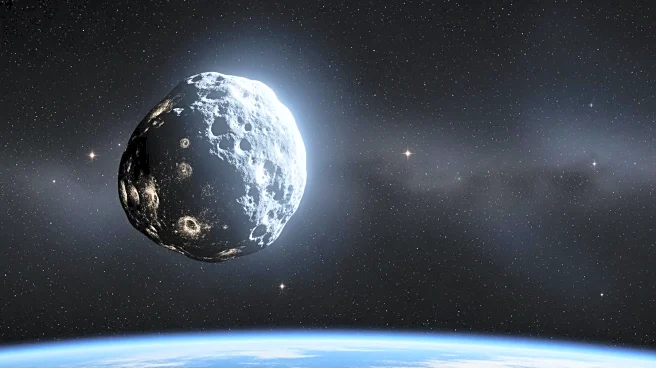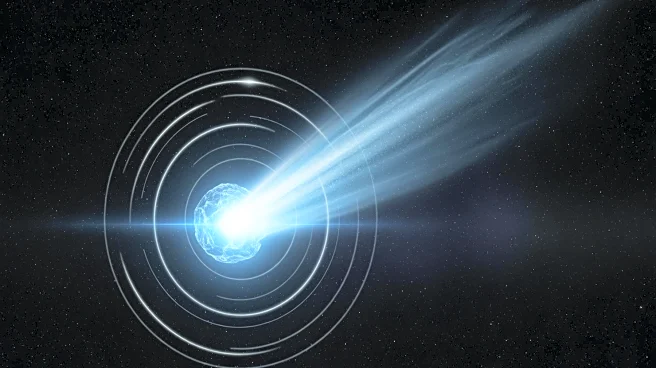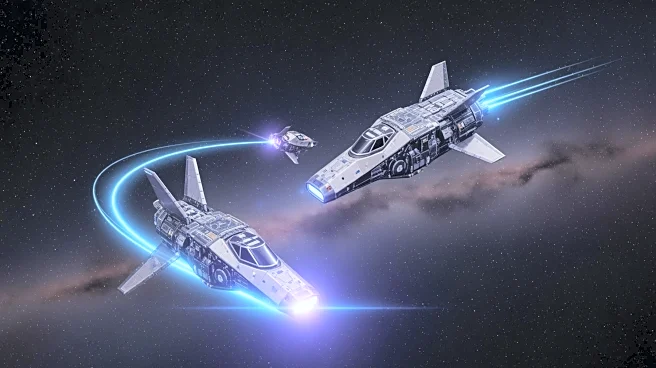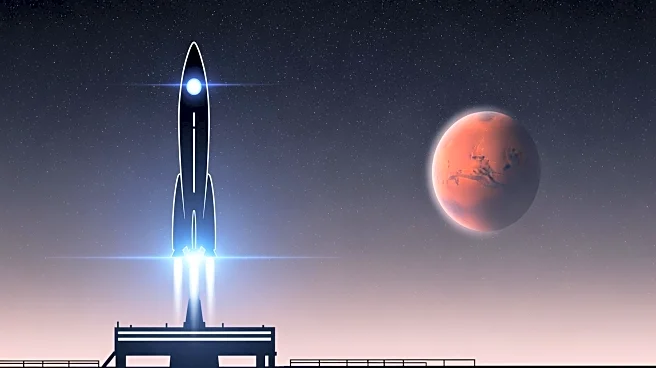What's Happening?
NASA is closely monitoring an asteroid named '2025 VP1', which is approximately 37 feet in diameter and traveling at over 18,300 miles per hour. The asteroid is expected to pass within 361,000 miles of
Earth on Tuesday. In addition to 2025 VP1, NASA is tracking another asteroid, '2025 VC4', which will come within 1.24 million miles of Earth. A larger asteroid, '3361 Orpheus', measuring around 1,400 feet in diameter, is also expected to pass Earth at a speed of 20,000 miles per hour. These asteroids are classified as near-Earth objects, which are space rocks that come within 120 million miles of the sun and enter Earth's orbital neighborhood.
Why It's Important?
The monitoring of near-Earth objects is crucial for planetary safety, as it allows scientists to predict and prepare for potential asteroid impacts. Although the majority of these objects pose no immediate threat, NASA's tracking efforts ensure that potentially hazardous asteroids are closely observed. These asteroids, which measure over 460 feet in size, have orbits that could bring them close to Earth over long periods. By maintaining vigilance, NASA can provide early warnings and take necessary precautions to mitigate any future risks. The agency's efforts contribute to global planetary defense strategies, safeguarding Earth from potential asteroid impacts.
What's Next?
NASA will continue to track the asteroids as they approach Earth, ensuring accurate predictions of their paths. The agency's Center for Near Earth Object Studies (CNEOS) will analyze data to refine trajectory models and assess any long-term risks. While none of the currently tracked asteroids pose an immediate threat, ongoing monitoring is essential for future preparedness. NASA's efforts will focus on improving detection capabilities and enhancing international collaboration in planetary defense. The agency will also continue public outreach to educate and inform the public about asteroid tracking and safety measures.
Beyond the Headlines
The tracking of near-Earth objects highlights the importance of scientific research and technological advancements in space exploration. NASA's ability to monitor and predict asteroid paths is a testament to the agency's commitment to planetary safety. This development underscores the need for continued investment in space technology and research, as understanding the behavior of asteroids is crucial for protecting Earth. The successful tracking of these objects also demonstrates the effectiveness of international collaboration in planetary defense, ensuring a comprehensive approach to monitoring and mitigating potential threats.











